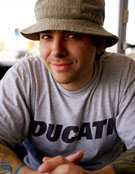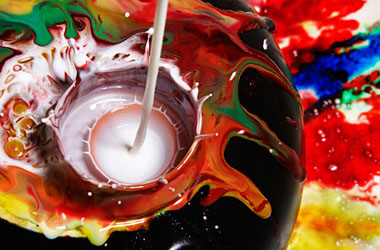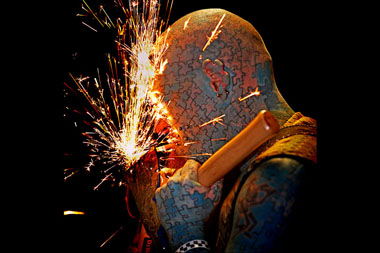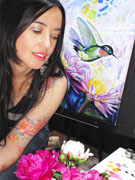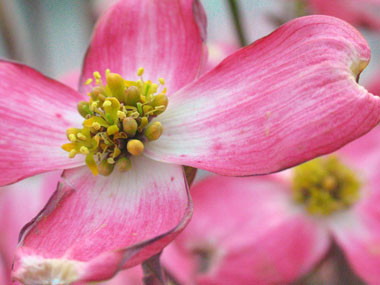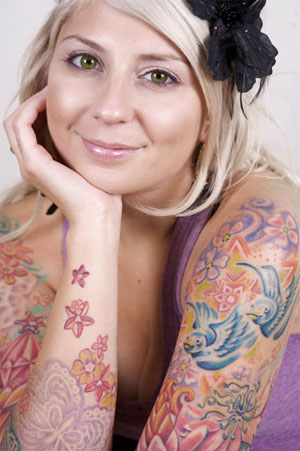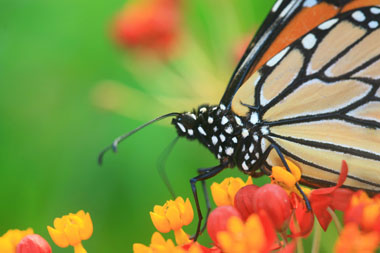Pro Photographers Share Their Most Guarded Digital Secrets
Anthony Tortoriello is a Chicago commercial photographer who specializes in animal and pet photography, action/motorsports, food and people and anything else that comes his way. His work has been used in numerous publications worldwide. Anthony is an expert in color processing and regularly works as a digital technician for top shooters across the country. He has studied color theory with the best (notably Dan Margulis) and is also a professional retoucher.
Preferred Post-Processing Applications: I’ve dabbled with every photo related software at some point or another but now the vast majority of my time is spent working in Phase One’s Capture One Pro which is a RAW workflow application, Photoshop CS4 (which I live and breathe) and occasionally Lightroom.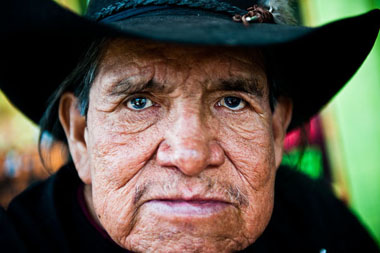
Click to embiggen
Favorite plug-in filters/scripts/actions/etc:
onOne’s Software Suite: Mainly for Genuine Fractals Pro and Photo Frame Pro which I find useful for certain images and jobs.
Photomatix Pro: For HDR and a handful of complex sharpening and color boost actions that I created and are specific to my style.
What tips can you share with us about working with filters in general? Less is more. Filters are to be used when needed not just because you can. Sure you can play and have fun, but if your job is to get an ordinary image to look like a breathtaking postcard then use filters with caution. Also, you can use color effects software, noise reduction software, etc., but there is no substitute for knowing how to do this all yourself by having a solid understanding of Photoshop. Photoshop is our digital darkroom period and should not be taken lightly.
I would suggest people use Photoshop as if it is a video game and you are trying to win the game by getting the best possible looking images. Try every possibility like you would in a game, for example you could try running filters in different channels.
Favorite Photography Tips: I am a firm believer at shooting as much as possible any time I can. This means always having a camera by your side and using it with NO worries about what others may be thinking. To paraphrase something photographer Jay Maisel has said, we have to do our visual push-ups everyday to keep our skills in shape.
Do you still shoot with film? I have not touched my film cameras in years. It just does not make sense on so many levels for me to still be using film.
Any tips on getting prints that match what we see on the screen? Make sure your displays are calibrated correctly with a calibration device such as an i1 Display 2 from X-Rite, which will help ensure that the color and luminosity of what you are seeing is accurate. Familiarize yourself with the proper settings for your software and output device -- for example, if you are printing out of Photoshop make certain you are not double color managing your files -- turn off color manage in the print dialog box. And select the correct paper profile. Obviously there is much more to it than that, but those things are a big step in the right direction.
Where do you print your work? At home I print with an Epson 4880 and an Epson 3880 for my more manageable sized prints. And for the larger prints I work with an amazing printing boutique in Chicago; JS Graphics.
Preferred Gear:Photography: Nikon D3x, Nikon D3, and Canon 5D Mark II. Lenses include “fast glass” Nikon 14-24mm f/2.8, 24-70mm f/2.8, 70-200mm f/2.8, 200-400mm f/4, 105mm f/2.8 micro, 16mm f/2.8 fisheye, & 50mm f/1.4G and similar for the Canon. Tony also loves his Canon G10 and G11 professional point and shoot cameras for everyday fun.
Computer: (Studio) Mac Pro 8-Core Two 2.93GHz Quad-Core Intel Xeon "Nehalem" Processors with 16GB 1066MHz DDR3 RAM with 4TB Internal Storage and 20TB external RAID Storage. 30-inch Apple Cinema Display and a 22-inch CRT for proofing. Wacom Intuos4 graphics tablet “I could not work without it.” (Travel) Apple 17-inch MacBook Pro with 8GB of RAM
To see more of Anthony’s work, visit his website.
Michele Wortman has been taking pictures professionally for over a decade. Her specialty is “macro photography with a deep emphasis on observing beauty.” Her work also includes shooting studio portraits of her tattoo clients. Her photography has been featured in several publications and in a book, “Moments of Epiphany” by Proton Press.
Preferred Post-Processing Applications: Adobe Photoshop CS3. And I particularly enjoy shooting my portrait work directly into my computer using Aperture and completely bypassing the memory card in the camera by tethering the camera to the computer. You can really see your shot and be able to make adjustments a lot better than the film days.
Favorite plug-in filters/scripts/actions/etc: I don’t use a lot of filters, and all of my favorites are included with Photoshop. I try not to alter the image too far beyond the original shot as I like to preserve the natural magic from the first impression. Typically I adjust the levels first, then I use the selective color menu to create better color balance adjustments. If the image needs some enhanced focus I select the area to sharpen with the lasso on a wide feather and sharpen as needed. I often use the path select tool to create cut outs for my portrait photography. I am a firm believer when it comes to digital manipulation that less is more. A subtle enhancement can make an image look extra dreamy, but take it just a bit too far and the piece will probably look artificial and overworked.
Favorite Photography Tips: Follow your bliss and where the light lands. Shoot what interests you and whatever your passion is. It will show in your work.
Do you still shoot with film? No, digital photography meets all of my needs plus I never have to deal with the hassle of scanning negatives with dust specs!
Where do you print your work? For portfolio purposes I print on the Epson Stylus Photo r1800. I also sometimes print on high quality transparency film which I backlight when I’m exhibiting my work.
Preferred Gear:
Photography: Canon EOS 5D with Canon EF 24-70MM, Canon MP-E 65MM, Canon EF 100 MM lenses. Lights: Calumet travelite 750 set, Nova 32 softbox, Canon 540 EZ Speedlite
Computer: MacBook Pro with 2.5GHz Core 2 Duo and 4GB RAM and an iMac with Intel Core Duo 2GHz and 2GB RAM. MyBook Essential edition 1TB external drive and a Burly 4 Bay Firewire Enclosure with four Seagate 7200.10 500GB drives.To see more of Michele’s work, visit her website.
Author: Michelle Delio
